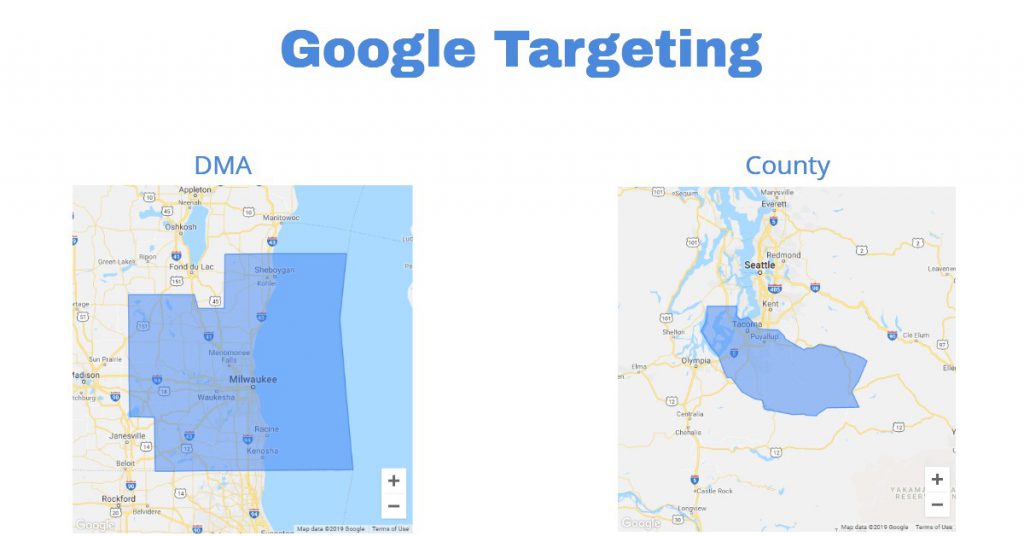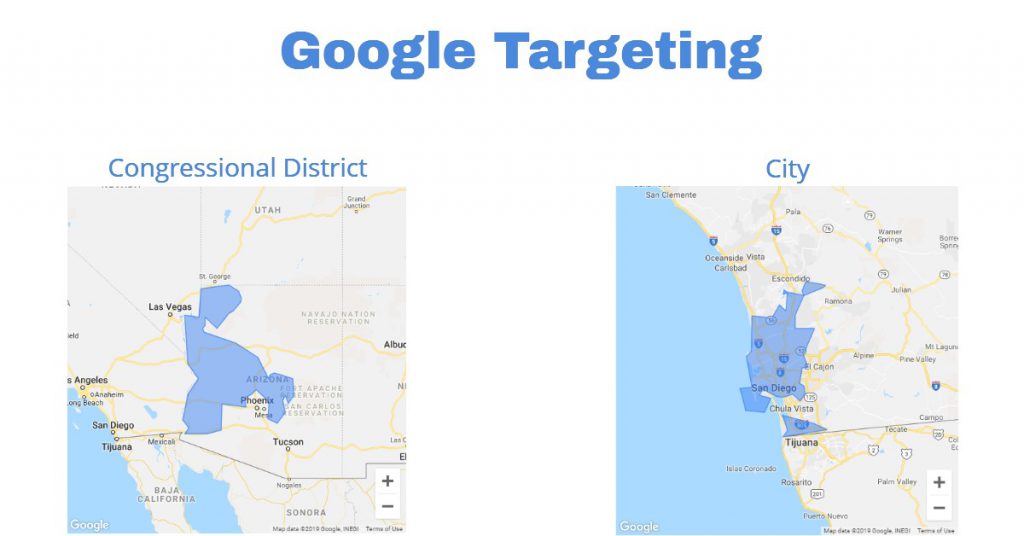Stop Getting Sold On “Geo-Fencing”

Synergy, change agents, deep dive, circle back, boiling the ocean, ping me – remember some of these cringe-worthy business buzzwords? Business is full of them, and yes I admit, I still use some of these words from time to time. What is it about business that gets us stuck on meaningless one-liners and platitudes devoid of wit? That’s a question for a different day. Today we tackle possibly the worst buzzword in our industry for 2019+ “geo-fencing.”
At Granular, we excel at geo-fencing, geo-targeting, geo-framing and every other hyper-local tactic out there! We target the user as tightly as possible to their location. But – there’s about 100 other targeting tactics we use to get in front of the right user, at the right time, with the right message. That’s why we’re so sour on people selling geo-fencing as a one trick pony.
[box] Tired of reading and want to hear another take on geo-fencing from our podcast?[/box]
Around here at Granular the term “geo-fencing” has become the target of many jokes. Primarily because we’ve heard the cringe-worthy sales pitches that publishing companies are slinging around the country to small businesses. They basically sell it as if they can set up a physical barrier “geo-fence” around a building or area and automatically show ads to potential customers. That’s not how it works. Not even close.
It’s a term that has permeated throughout the paid search and paid social landscape. It’s become a flashy buzzword for sales teams and digital strategists to slap onto proposals as if it was a special feature of a brand new car. The worst part, it’s just flashy enough to make business owners or marketing managers take notice, and just relevant enough for it to make sense.
The problem we see is that “geo-fencing” is often talked about as a new technology, exclusive and proprietary to the PPC agency or media firm running your ads. It’s sometimes considered an add-on item or used to justify high management fees.
In reality, geo-targeting and “geo-fencing” are something that any good PPC agency can do and often is the first point of conversation when putting together a PPC strategy for a client – with no additional cost.
Geo-targeting vs. “Geo-fencing”
In the world of paid search, display ads, and paid social media, targeting your audience by physical location has almost always been an option. Targeting by location is perhaps the most basic of advertising strategies. On Facebook’s ad platform and the Google Ads platform, you can target as broad as the entire world and as granular as a small radius around single address – that’s geo-targeting. Geo-targeting capabilities are different from platform to platform, but the fundamentals are the same, you only show ads to people in that area.
“Geo-fencing” refers to drawing specific barriers in which your ads will be served. Business locations, universities, stadiums, billboards (don’t get us started on this) and more can all be “roped off” as special areas where your ads will be served to users.
They sound similar, so what’s the difference? Nothing. Really. The only difference is the high-pressure sales and empty promises. We’ve seen these “geo-fencing” agencies swoop in, make a sale and bail. Little to no true measurement of sales – just vanity metrics like impressions and clicks.
“Geo-fencing” is nothing but a different name given to geo-targeting at a more specific level. Just because you are targeting in more specific locations, does not mean the fundamental technology used is changing. Remember, the FTC protects us as smartphone users from a lot of these claims and user opt-in is still needed for 1:1 ad serving.
Exposing the Lies
Often we see geo fencing sold as a magical barrier where you can capture and harvest users who enter the barrier.
We simply ask you to please think through the reality of what is being sold to you. For example, we’ve heard companies sell geo-fencing around billboards. They say if someone drives by your billboard they will then be hit with a digital ad. Think about this. Do you browse the web, read news sites and articles while you’re driving – so you can get served a banner ad? No.
When you enter a store, are you browsing the web, getting hit with competitor ads? No, probably not. If you do somehow stumble on a competitor ad (imagine being in Target, getting served a Wal-Mart ad) would you set your stuff down, get back in your car and go to the nearest Wal-Mart? No, I would think not.
We ask people to really think of the usability. Doing that should tell you that this is not magical technology that drives new customers to your store or to your brand.
The truth about this, how they will show that you did in fact get impressions from “people who drove past your billboard” is that they simply saturate that area and get a bunch of impressions. There are typically 100’s or 1000’s of people within 1/2 mile of that billboard, so that’s who actually saw the impression. Not a random person driving down the highway.
But the Media Agency sales guy showed me how many Impressions I got from people in my competitor’s store
The beauty of selling “mobile conquesting” or “geo-fencing” is that the vendor uses mathematical probability as their main weapon against true business impact and one-to-one attribution. We’ve seen Google do it with YouTube over and over again in their studies. By using the fact that over 1 billion views of their videos occur every single day, the probability of someone watching a video and then taking an action online (like purchasing something) is very high, especially if an advertiser sets tight targeting parameters that saturates their potential customer base. It’s easy to win with enough brute force.
The general idea is that if you saturate a market heavy enough, the probability that a new customer seeing that ad is high. If I physically stand outside of a Target and yell at people to “buy something inside” as they walk past me, I would bet that 75% or more of the passersby would buy something at Target. Would I then take credit for that sale? No way. Because Target’s nature conversion rate is probably that high. But that’s what these “conquesting” folks are doing. And frankly, YouTube ad executives have done this as well. That’s why they require a minimum spend in order to guarantee “lift”.
Geo-Fencing and Conquesting vendors do the same thing, often on a smaller scale, but they have math on their side. They already know what competitor locations you want to target, because you told them. So, they simply saturate that area with ads and ensure that 75-100% of online (typically mobile) users get an ad. That’s truth #1.
Truth #2 is that people visiting your competitors are “in market” to buy that type of product – car dealer, kitchen store, etc. That means they’re going to buy anyways – from you or a competitor – the probability is high. *With Google GDN, we can actually bid on “in-market segments” on top of geo, so it performs well.
Truth #3 is that people shop around at a number of stores, often in a tight geographic area. This is especially true when considering a more expensive product, like countertops or cars. This is anecdotal, but I have certainly shopped 4-5 stores each time I’ve purchased stone countertops or cars. I’ve done that multiple times. I do the same for appliances, TVs, and office furniture. It’s human nature.
Truth #4 is that once you get a prospect into your store, you most likely have a close rate of x%. If they saw an ad or not.
The perception of conquesting is so favorable to companies, that they often look past the issue of probability and the lack of one-to-one, ad-to-customer measurement. The fact is, if Granular was given the same budget to spend in GDN or Facebook we would get similar results – but that wouldn’t be good enough for us. We would need to get close to a 1-1 attribution and push back on you, the client, to have a conversion action on your site / landing page. And try to track that lead into a CRM and generate true ROI numbers. Impressions are not a KPI we place high value on in many cases.
What we see geo and conquesting vendors do is misleading and very easy to do. With probability on their side, they can look like the hero. But the true hero may have been search, display, billboards, your branded trucks driving around, or just dumb luck with ad saturation and human nature.
So What Should You Do? (TLDR)
Geo-targeting and “geo-fencing” are great, but all PPC marketers are limited by what platform you choose to use. We’re all lucky that Facebook, Google, Bing, and others have come a long way over the years in their geographic targeting capabilities. We only see the targeting getting more specific as the ad platforms innovate over time. But remember that there are privacy concerns and FTC limitations on how targeted we can actually get.
So next time you see a company touting “geo-fencing” as some type of special service, don’t be fooled. What you should be asking is what’s the average experience level of their staff (our’s is 5 years of PPC + geo-targeting experience), what’s their campaign architecture approach, what’s their fee structure look like, what’s their level of competency with your type of business, and most of all – what are their measurable results and past success stories. Demand actual sales, not just impressions. Go ahead and ask for a past client to talk to as a reference too. We do that all the time. Don’t just take their case study at face value, ask to talk to that client of theirs.
Good luck, and happy bidding!



